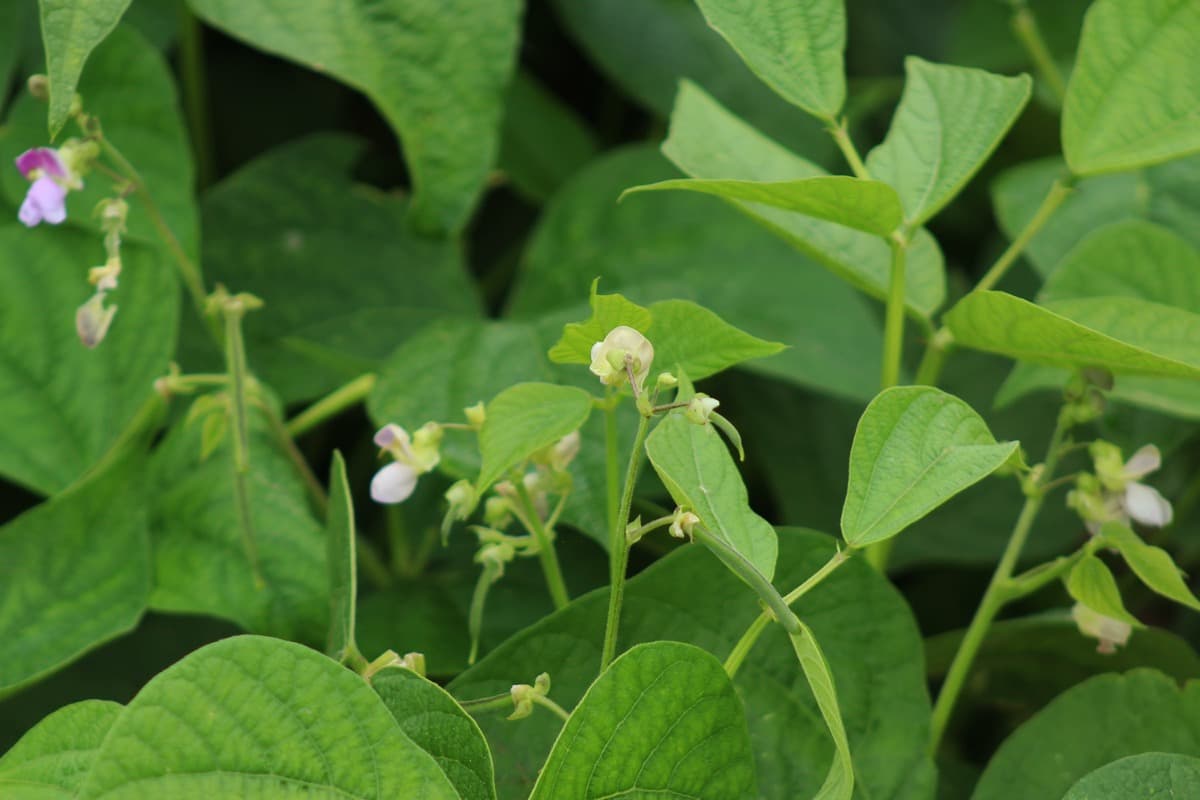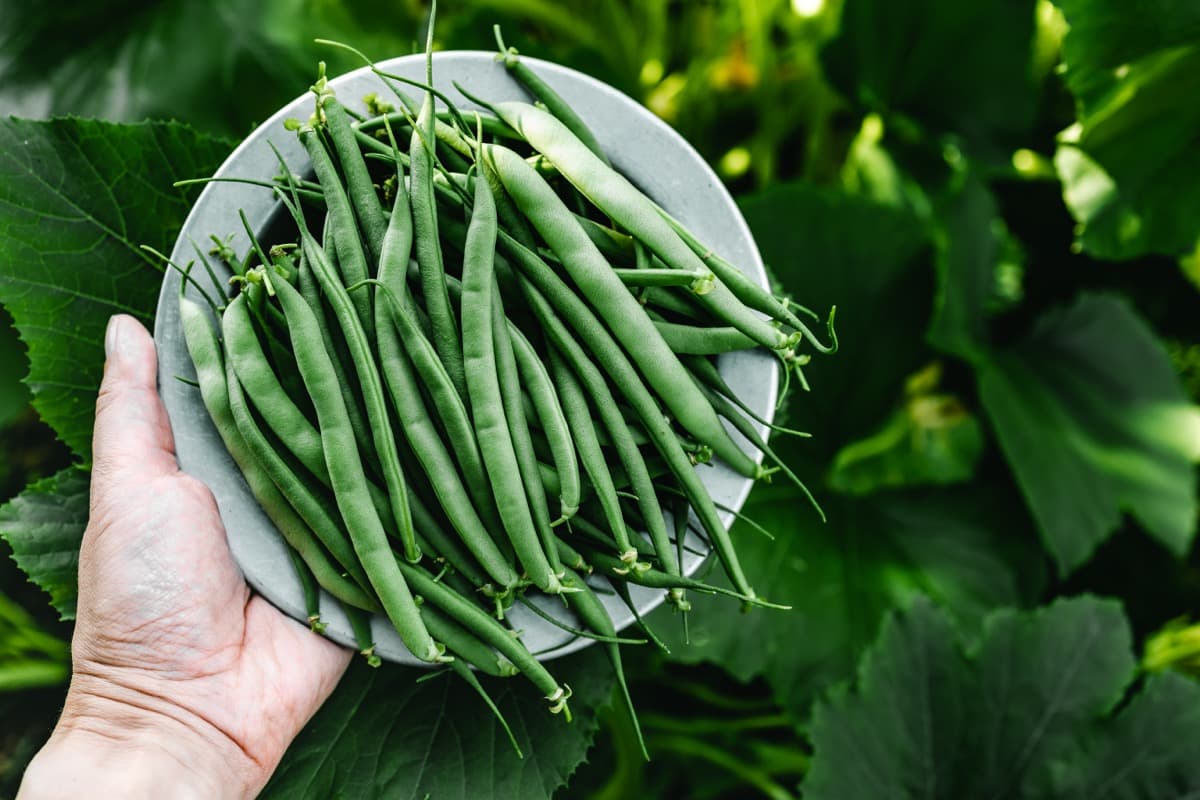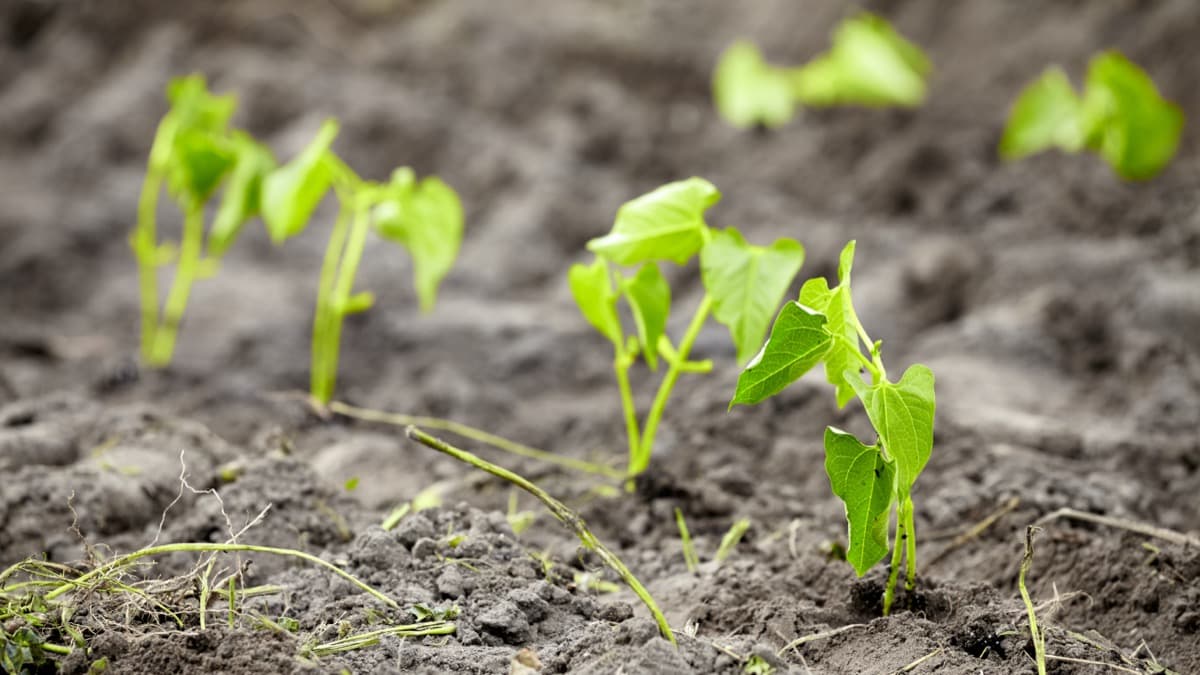Green beans are a popular vegetable for home gardens due to their ease of cultivation and delicious taste. However, like any other plant, green beans are prone to certain problems that can hinder their growth and productivity. This document will discuss some common problems that green bean plants might encounter and provide treatment and solutions for each issue.

10 Common Problems With Green Beans Plants
Yellowing Leaves on Garden-Grown Green Beans
- Nutrient deficiency is a common reason for yellowing leaves in green beans. To fix this issue, add nitrogen-rich organic matter, such as vermicompost or well-rotted manure, into the soil before planting.
- Another possible cause of young bean leaves turning yellow is the result of insufficient light. Beans grow best when planted in a site receiving 8 to 10 hours of direct light daily.
- Pests and diseases can also cause the green bean leaves to turn yellow and fall off. Applying appropriate insecticides or organic pest control methods can help manage these pests and prevent further damage.
Pest Infestation in Green Bean Plants
The most common insect pests that attack green bean plants include aphids, spider mites, and cucumber beetles. And also, one major insect of pest bean is the Bean leaf beetle, which typically chews irregular holes in the leaves, leaving a characteristic shot-hole appearance. Slugs, snails, Japanese beetles, cutworms, and earwigs are the common culprits of eating green bean leaves at night. If you notice signs of pest infestation, Consider applying an organic insecticidal soap or neem oil spray to get rid of pest infestation in green bean plants.
Getting Rid of Bugs That Eating Green Bean Leaves Naturally
- Beneficial insects: Encourage beneficial insects like ladybugs, lacewings, and parasitic wasps in your garden. These insects prey on common pests and help control their population.
- Physical barriers: Use floating row covers or netting to create a physical barrier around your green bean plants, preventing insects from reaching and damaging them.
Wilting Green Bean Plants in the Garden
Some common causes of wilting green bean plants include issues related to transplanting, fungal diseases like Fusarium wilt, and challenges during Winter.
- Green beans wilting after transplant: To minimize transplant shock, proper watering, and sufficient shading during the initial days after transplanting can help reduce stress and prevent wilting.
- Fusarium wilt in beans: It is caused by the soil-borne fungus Fusarium oxysporum. Using disease-resistant varieties and maintaining proper sanitation in the garden, such as removing infected plant debris, can help minimize the risk of infection.
- Wilting green bean plants in the garden in winter: To protect green bean plants in Winter, consider planting them in raised beds or using row covers to provide insulation.
Stunted Growth in Garden Green Beans
- Inadequate sunlight: Their growth can be stunted if they do not get enough sunlight. So ensure they are planted in a sunny spot.
- Nutrient Deficiency: Another possible reason for stunted growth is nutrient deficiency. Use a balanced fertilizer to ensure that your green beans receive sufficient nutrients.
- Overwatering or underwatering: It can also hinder the growth of green beans. It is important to strike a balance and provide the plants with the right water.
- Pests and diseases: Pests and diseases cause stunted growth. Regularly check your plants for any pest infestation or disease symptoms and take appropriate measures to control them.
Brown Spots on Green Bean Leaves
- Remove and destroy infected leaves: Carefully remove and destroy any leaves showing brown spots.
- Improve plant hygiene: Regularly remove fallen leaves and debris from the garden area to treat brown spots on green leaves.
- Water properly: Green beans require regular watering. Water at the plant’s base, avoiding wetting the leaves.
- Chlorothalonil is the best chemical fungicide for treating brown spots on green bean leaves.
In case you missed it: How to Increase Flowers in French Beans: Explained in 10 Simple Steps for High Yield and Profit

Fungal Diseases Affecting Garden-Grown Green Beans
One of the most common fungal diseases of green beans is powdery mildew. To treat this green bean disease, it is important to provide adequate air circulation around the plants by spacing them properly and avoiding overcrowding. Another fungal disease that affects green beans is rust. Water the plants at the base rather than overhead, as wet foliage can promote the spread of the disease. Removing infected leaves and using sulfur or chlorothalonil can also help to control rust.
Green Bean Plants Not Producing Pods
- Insufficient sunlight might be the culprit. Green bean plants require six hours of sunlight, and if the plants are not receiving enough sunlight, consider relocating them to a sunnier spot in your garden.
- Inadequate pollination can affect pod production. If you notice a lack of pollinators in the garden, consider planting flowers that attract or manually pollinating them using a small brush.
- Lastly, nutrient deficiencies may also contribute to the problem. Green bean plants require a balanced fertilizer rich in phosphorus, potassium, and nitrogen for optimal growth and pod development. Consider applying a suitable fertilizer according to the instructions provided.
Yellow or Distorted Green Bean Pods
- As green bean pods mature, they may naturally turn yellow before fully drying and ready for harvesting. Monitor the pods closely and harvest them promptly to prevent them from becoming overripe and yellow.
- Another possible cause of green bean pods turning yellow is diseases. One such disease is bean common mosaic virus, transmitted by aphids. Control aphid populations, and if found, treat immediately with insecticidal soap, neem oil, or organic products based on pyrethroids.
- Another disease to be aware of is bacterial blight, which can cause yellowing and browning of the pods. Practice good garden hygiene. This includes removing any affected plants or pods to prevent the spread of diseases. Use copper oxychloride
Overwatering Issues With Garden Green Beans
- Excessive watering frequency: Watering green beans too frequently can saturate the soil and prevent proper drainage.
- Poor soil drainage: Soils not draining well can retain excess water around the plant’s roots, leading to overwatering.
- Improper watering techniques: Watering the foliage instead of the soil can result in excess leaf moisture, increasing the risk of overwatering.
Fixing the Over-watering Issue
- Adjust watering frequency: Allow the soil to dry out slightly between waterings. Stick your finger into the soil; if it looks moist, hold off on watering.
- Improve soil drainage: If the soil around your green bean plants does not drain well, consider amending it with organic matter, such as compost, to improve drainage.
In case you missed it: How to Increase Female Flowers in Cluster Beans/Guar Beans: Explained 10 Steps for More Yields and Profit

Nutrient Deficiencies in Garden-Grown Green Beans
| Nutrient | Symptom | Management |
| Nitrogen | Yellowing leaves, stunted growth | blood meal or fish emulsion, or Well aged manure |
| Phosphorous | Purple leaves, delayed flowering | Bone meal or rock phosphate, or kelp meal |
| Potassium | Yellowing or browning leaf edges, weak stems | Wood ash or potassium sulfate |
| Calcium | Blossom end rot (brown, sunken spots on fruits) | Calcium nitrate or gypsum |
Conclusion
By being aware of the common problems affecting green bean plants and their respective treatments and solutions, you can overcome these challenges and enjoy a bountiful harvest of delicious green beans.
- Feed Your Flock for Less: Top 10 Tips to Save on Chicken Feed
- Ultimate Guide to Ossabaw Island Hog: Breeding, Raising, Diet, and Care
- Hatching Answers: The Top 10 Reasons Your Chickens Aren’t Laying Eggs
- Eggs and Economics: Breaking Down the Cost of Raising Backyard Chickens
- Defend Your Greens: Proven Methods to Keep Iguanas Out of Your Garden
- Ultimate Guide to Cinnamon Queen Chicken: A Comprehensive Guide for Beginners
- Ultimate Guide to California Tan Chicken: Breeding, Raising, Diet, Egg-Production and Care
- Ultimate Guide to Marsh Daisy Chicken: Breeding, Raising, Diet, and Care
- 10 Types of Chicken Farming Businesses You Can Start for Profits